Wondering about the cost of strut replacement? You’re not alone. When your vehicle starts giving you that bouncy, uncomfortable ride, it’s often a sign that your struts need attention. This critical suspension component affects both your driving comfort and safety on the road.
We’ve researched extensively to bring you the most accurate cost breakdown for strut replacement. Prices typically range from $450 to $900 per pair, though several factors can push this higher or lower. Your vehicle’s make and model, parts quality, and whether you choose DIY or professional installation all play important roles in the final price tag.
Understanding Strut Replacement Costs
Strut replacement costs vary widely depending on several key factors. Most vehicles require between $450 and $900 per pair for complete strut replacement. Labor charges typically account for $150-$300 of this total, with parts making up the remaining $300-$600. These estimates reflect average market prices across the United States.
Vehicle make and model significantly impact replacement costs. Luxury vehicles like BMW or Mercedes-Benz often require specialty parts that cost 30-40% more than those for domestic models. Japanese imports such as Toyota and Honda generally fall in the mid-range price category, offering a balance between quality and affordability.
Parts quality represents another major cost determinant. OEM (Original Equipment Manufacturer) struts provide exact matches to factory specifications but come at premium prices. Aftermarket options from brands like KYB, Monroe, and Gabriel offer various quality tiers, with economy versions starting around $50 per strut and premium options reaching $200+ each.
Professional installation versus DIY approaches creates substantial cost differences. While DIY replacement saves on labor costs, it requires specialized tools including spring compressors, torque wrenches, and alignment equipment. Professional mechanics charge $75-$150 per hour for their expertise and access to proper equipment, ensuring correct installation and post-replacement wheel alignment.
Geographic location affects final pricing considerably. Urban areas with higher costs of living typically charge 15-25% more for both parts and labor compared to rural locations. Regional differences also exist, with West Coast and Northeast prices trending higher than those in the Midwest and Southern states.
Average Cost to Replace Struts
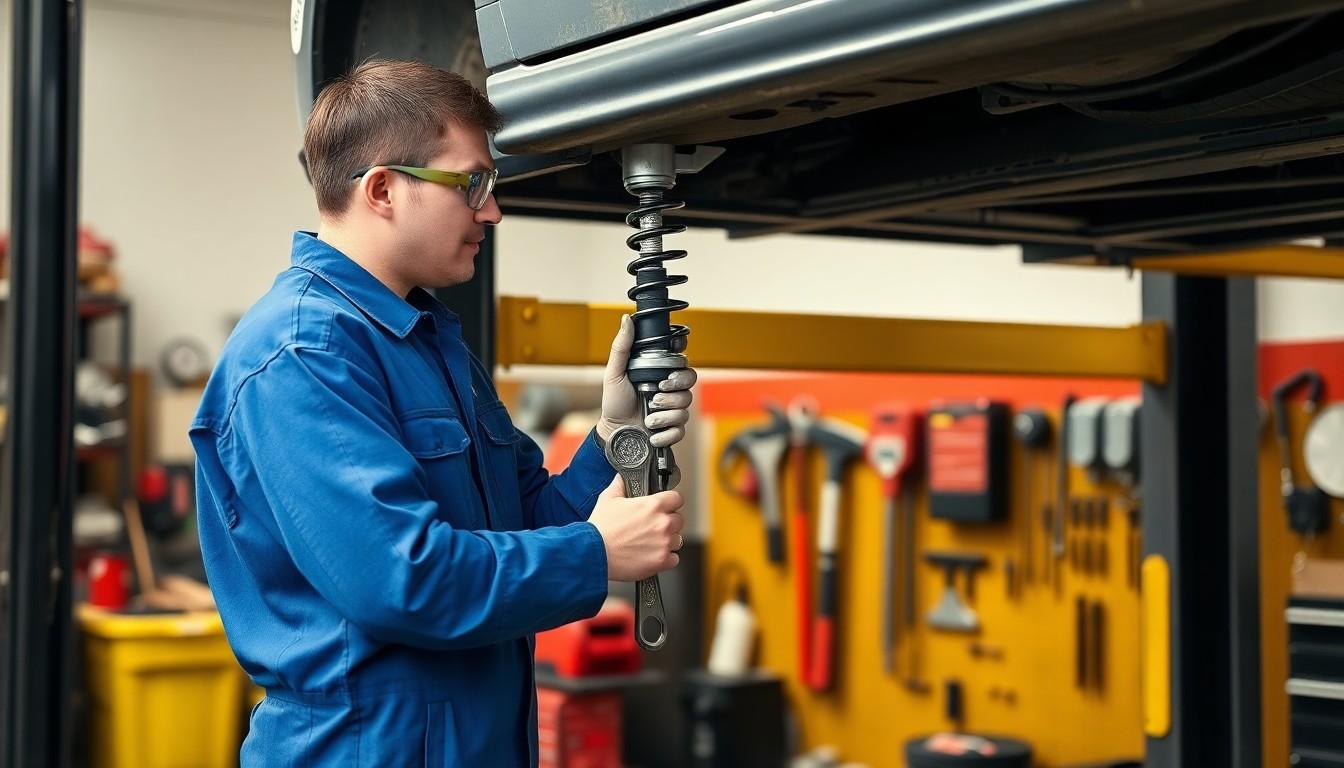
The cost to replace struts typically ranges from $450 to $1,100 for a complete job. This price varies based on vehicle type, location, and whether you’re replacing just the strut itself or the entire assembly including coil springs and mounts.
Front Strut Replacement Cost
Front strut replacement costs between $300 and $700 per strut. Since mechanics almost always replace struts in pairs for balanced performance, expect to pay $600 to $1,400 for both front struts. Labor charges for front strut installation exceed $200 per strut in many cases, contributing significantly to the total expense. Front struts generally cost more than rear ones due to their more complex design and the greater stress they endure from steering and braking.
Rear Strut Replacement Cost
Rear strut replacement is typically less expensive, ranging from $220 to $580 per strut. The total for a pair of rear struts runs between $440 and $1,160 including parts and labor. Rear struts often involve less complicated installation procedures, which can reduce labor costs compared to front struts. Additional services like wheel alignment might be necessary after rear strut replacement, potentially adding $50-$100 to your final bill depending on your vehicle’s suspension configuration.
Factors That Affect Strut Replacement Pricing
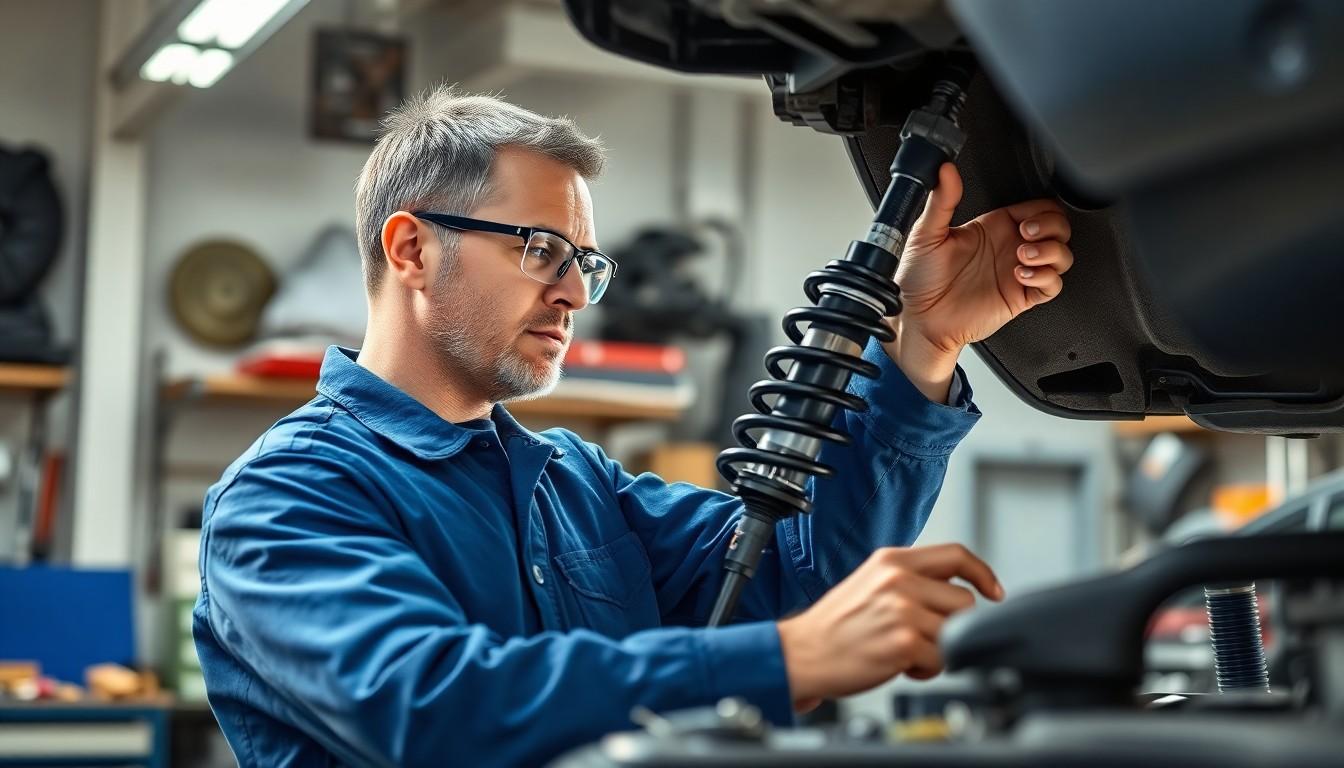
Several key variables impact the final cost of strut replacement for your vehicle. These factors can cause prices to range significantly from $700 to $2,600 depending on your exact circumstances.
Vehicle Make and Model
Vehicle specifications dramatically influence strut replacement costs. High-performance vehicles and luxury brands typically require specialized struts manufactured to precise standards, increasing both parts and labor expenses. Premium European vehicles often fall at the higher end of the price spectrum, while common domestic models tend to be more affordable. The total cost range of $700 to $2,600 reflects this wide variation based on vehicle type and strut quality requirements.
OEM vs. Aftermarket Parts
Parts selection creates a substantial price difference when replacing struts:
- OEM Parts come directly from the original manufacturer and match exactly what came with your vehicle. These components typically cost more because they’re made to exact factory specifications. Dealerships generally use these parts exclusively, which contributes to their higher service rates.
- Aftermarket Parts provide a more economical alternative while offering comparable performance in many cases. Individual shock and strut assemblies from aftermarket suppliers range between $150 and $900, making them an attractive option for budget-conscious drivers. Purchasing these components online can further reduce your overall expense.
Labor Rates by Location
Labor costs represent a important portion of strut replacement expenses:
- Standard Labor Charges range from $150 to $300 per assembly, reflecting the mechanic’s hourly rate and your vehicle’s complexity. This translates to approximately $300 to $800 in labor for a complete job depending on whether you’re replacing just the front, rear, or all struts.
- Geographic Differences matter when calculating costs. Urban repair shops typically charge premium rates compared to rural mechanics due to higher overhead expenses. Dealership service departments generally command the highest labor rates because of their manufacturer affiliations and specialized training.
Additional expenses include wheel alignment, which adds $150 to $200 to your total bill. This service is essential after strut replacement to prevent uneven tire wear and ensure proper vehicle handling.
Signs Your Struts Need Replacement
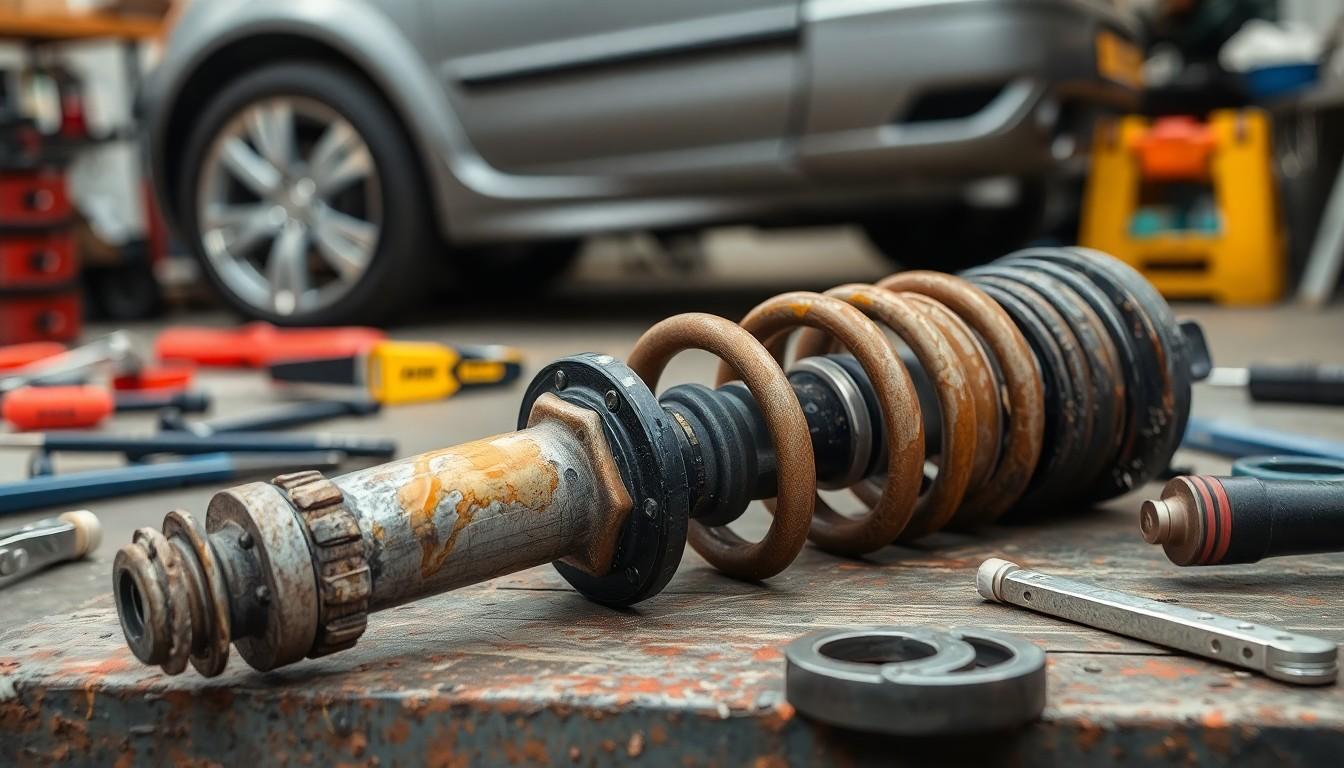
Recognizing when struts need replacement helps avoid costly damage to your vehicle. Your car’s behavior provides clear indicators of failing struts, ensuring you address issues before they worsen.
Bouncing or Swerving
Excessive bouncing after hitting bumps signals worn-out struts. Your vehicle should stabilize quickly after encountering road imperfections. Continuous bouncing motion indicates the struts can no longer effectively dampen impact forces, compromising handling and safety.
Uneven Tire Wear
Tire treads wearing unevenly often result from compromised struts affecting wheel alignment. Inspecting your tires regularly reveals patterns like cupping or scalloping that suggest strut problems. These wear patterns develop when wheels bounce excessively during normal driving conditions.
Leaks
Fluid leaking around strut assemblies indicates seal damage requiring immediate attention. These leaks appear as oily residue on the outside of the strut or puddles beneath your vehicle. Once hydraulic fluid escapes, struts lose their ability to provide proper suspension support.
Clunking or Knocking Sounds
Unusual noises when driving over bumps point to deteriorating strut components. These sounds typically occur from loose or worn mounting hardware within the strut assembly. Metallic knocking particularly signals advanced wear requiring prompt replacement.
Sagging or Uneven Ride Height
Vehicle stance tilting or appearing lower on one side suggests failing struts. Measuring the distance between wheel wells and the ground reveals suspension irregularities. Properly functioning struts maintain consistent ride height regardless of load conditions.
Frequent Bottoming Out
Experiencing chassis contact with the road surface over moderate bumps indicates severely compromised struts. Your suspension should absorb normal road imperfections without allowing the vehicle to bottom out. This symptom not only creates uncomfortable rides but risks damage to other vehicle components.
Mileage
Struts typically require replacement between 50,000 to 100,000 miles based on driving conditions. Highway miles cause less wear than city driving with frequent stops and rough roads. Many manufacturers recommend inspection at regular intervals rather than waiting for symptoms to appear.
DIY vs. Professional Strut Replacement
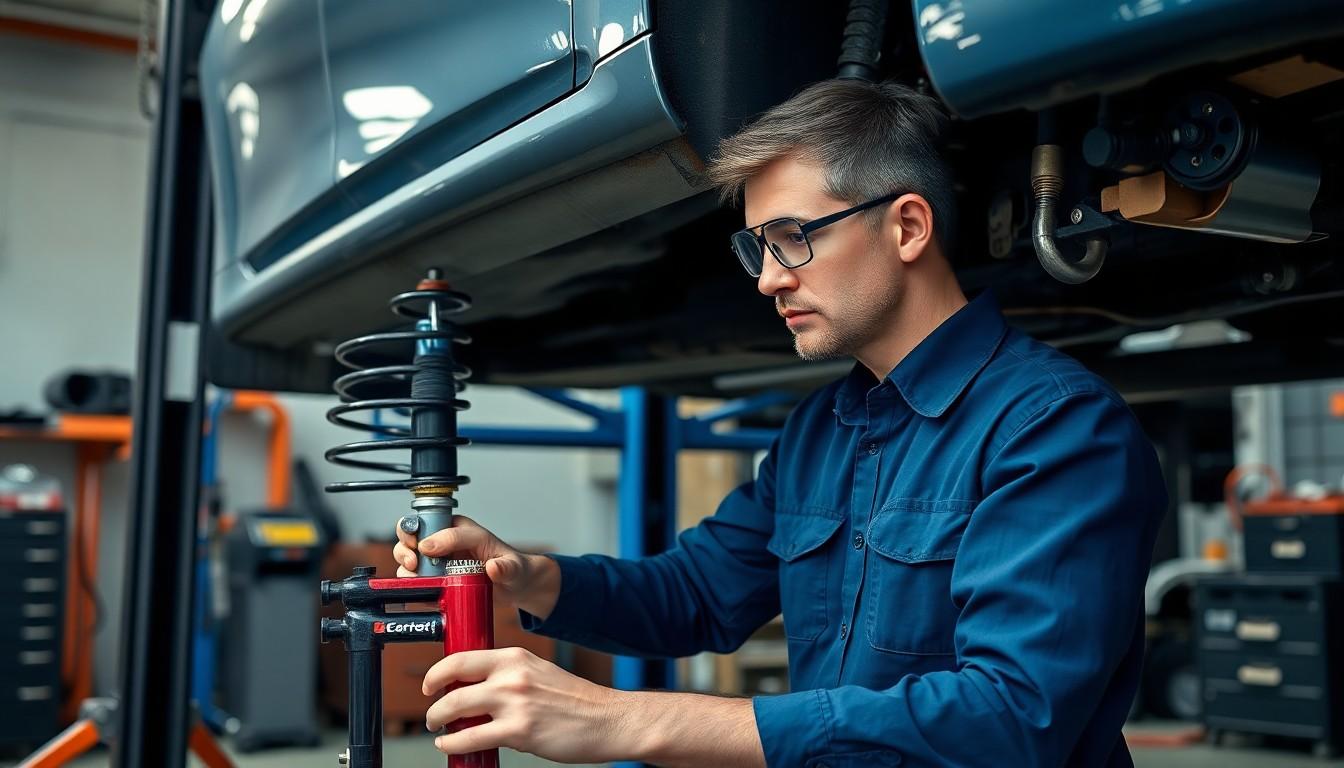
Replacing struts presents two distinct options: doing it yourself or hiring a professional mechanic. Each approach offers different advantages in terms of cost, convenience, and quality assurance depending on your mechanical skills and available tools.
DIY Strut Replacement
DIY strut replacement can significantly reduce your overall costs by eliminating labor charges. When handling the job yourself, you’ll only pay for parts, saving between $200 to $443 per strut in labor costs. For a complete front strut replacement job, this translates to potential savings of $400 to $886 by avoiding professional labor charges. Many car enthusiasts choose this route to save money while gaining valuable mechanical experience.
Professional Strut Replacement
Professional strut replacement ensures the job is completed correctly by trained mechanics with proper equipment. The total cost for professional replacement typically ranges from $924 to $1,208 for an average shock or strut replacement, including both parts and labor. Professional services often include additional benefits like wheel alignment (necessary after strut replacement) and warranties on both parts and labor. Mechanics can also identify and address related suspension issues during the service.
Cost Savings of DIY Installation
DIY installation offers substantial savings on both parts and labor costs. The parts savings come from having options in component selection – an individual strut assembly costs roughly $150 to $350, while purchasing just the strut (without the complete assembly) can reduce expenses by $40 to $80 per unit. Labor represents the most important savings, eliminating $200 to $443 per strut in professional fees. A complete DIY front strut replacement might cost $300-$700 for parts versus $600-$1,400 for professional service including labor.
Tools and Skills Required
Successful DIY strut replacement requires exact tools and mechanical knowledge. Essential tools include a strut compressor (crucial for safe spring handling), complete socket set, wheel chock, jack stands, and basic automotive tools. The mechanical skills needed include safely lifting and supporting your vehicle, properly compressing and handling coil springs (which store important energy), correctly torquing fasteners to specification, and understanding suspension geometry. Experience with automotive repairs proves beneficial as this job typically takes two to three hours for experienced DIYers but might require a full day for beginners.
Long-Term Benefits of Timely Strut Replacement
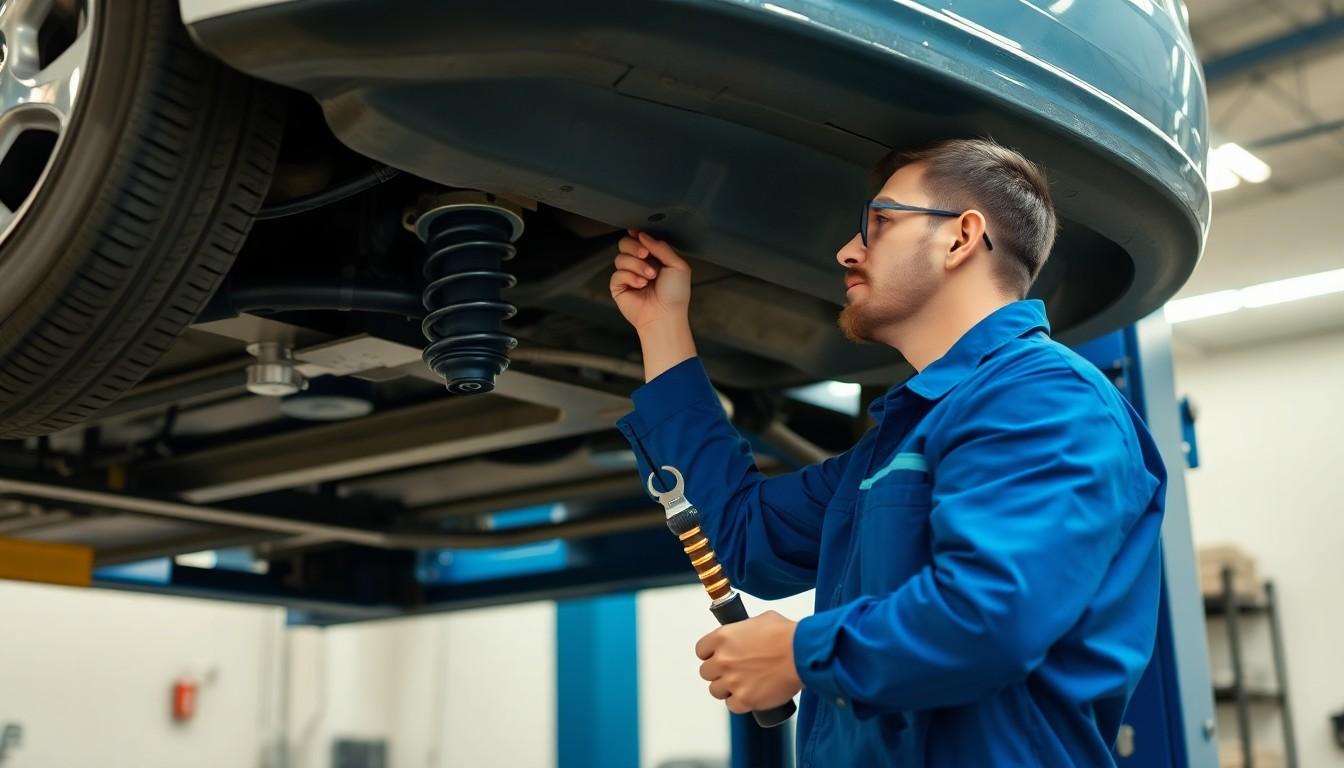
Safety
Properly functioning struts are essential for maintaining vehicle safety on the road. Worn-out struts significantly reduce vehicle stability, particularly during emergency braking and cornering maneuvers. These critical components help keep your tires firmly planted on the road, providing the traction needed for safe driving conditions. Deteriorated struts can extend stopping distances and compromise your ability to navigate corners safely, increasing accident risks.
Vehicle Performance
Timely strut replacement directly enhances your vehicle’s handling characteristics and ride quality. Fresh struts absorb road imperfections more effectively, delivering a smoother, more comfortable driving experience. Your car responds more predictably to steering inputs with properly functioning struts in place. Driving enjoyment improves as bouncing, swaying, and diving motions during acceleration and braking are minimized.
Extended Component Life
Replacing struts at appropriate intervals protects other expensive vehicle systems from premature wear. Worn struts cause uneven tire wear patterns, potentially reducing tire life by thousands of miles. Your braking system experiences additional stress when struts can’t properly manage weight transfer during stops. Other suspension components like control arms, bushings, and ball joints face accelerated deterioration when forced to compensate for failing struts.
Fuel Efficiency
Well-maintained struts contribute to better fuel economy by ensuring optimal vehicle dynamics. Cars with functioning struts maintain proper alignment and weight distribution, requiring less energy to propel forward. Fuel consumption typically increases when worn struts cause excessive body movement and irregular tire contact with the road. The engine works harder to maintain speed when the suspension isn’t operating efficiently, leading to noticeable decreases in miles per gallon.
Preventive Maintenance
Regular strut replacement prevents cascading, more expensive repairs throughout your vehicle’s suspension system. Neglected struts can lead to damaged springs, control arms, and steering components that multiply your repair costs. Early replacement at the first signs of wear saves money compared to addressing multiple failed components later. Mechanics often find that timely strut maintenance extends overall vehicle lifespan by reducing stress on the chassis and related systems.
Conclusion
Replacing your vehicle’s struts isn’t just about fixing a bouncy ride. It’s an investment in your car’s safety performance and long-term health. With costs typically ranging from $450 to $1,100 for a complete job we understand why many drivers consider the DIY route to save on labor costs.
Whether you choose professional installation or tackle the project yourself weighing factors like vehicle type part quality and additional services will help you make the most cost-effective decision. Remember that timely replacement based on mileage recommendations and warning signs prevents more expensive problems down the road.
By understanding what influences strut replacement costs you’re better equipped to budget for this essential maintenance task and keep your vehicle running smoothly for years to come.
Frequently Asked Questions
How much does strut replacement cost?
Strut replacement typically costs between $450 and $1,100 for a complete job. This price varies based on your vehicle’s make and model, quality of parts chosen, and whether you opt for professional installation or DIY. Front strut replacement ranges from $600 to $1,400 for a pair, while rear struts cost between $440 and $1,160 for both sides.
What factors affect strut replacement costs?
Several factors impact strut replacement costs: vehicle make and model (luxury vehicles cost more), part quality (OEM vs. aftermarket), labor rates (varying by location with urban areas charging more), and additional services like wheel alignment ($50-$100). These variables can push the total cost anywhere from $700 to $2,600.
How often should struts be replaced?
Struts typically need replacement between 50,000 to 100,000 miles, depending on driving conditions. Rather than waiting for problems to develop, regular inspections are recommended. Driving frequently on rough roads may require earlier replacement than the typical interval.
What are signs that struts need replacement?
Look for excessive bouncing after hitting bumps, uneven tire wear, fluid leaks around strut assemblies, clunking noises when driving over bumps, sagging ride height, and frequent bottoming out. If you notice these symptoms, have your struts inspected as soon as possible to avoid further damage to your vehicle.
Can I replace struts myself to save money?
Yes, DIY strut replacement can save $200-$443 per strut by eliminating labor costs. While professional installation costs $924-$1,208, DIY parts cost only $300-$700. However, you’ll need specialized tools like a strut compressor and mechanical knowledge. The job takes 2-3 hours for experienced DIYers but may require a full day for beginners.
Is wheel alignment necessary after strut replacement?
Yes, wheel alignment is essential after strut replacement. This additional service typically costs $50-$100 but is crucial for proper vehicle handling, preventing uneven tire wear, and ensuring your vehicle drives straight. Skipping alignment can lead to more expensive problems down the road.
What are the benefits of timely strut replacement?
Timely strut replacement improves vehicle safety by enhancing stability during emergency maneuvers, provides better handling and a smoother ride, protects other components from premature wear, improves fuel efficiency by maintaining proper alignment, and prevents more costly repairs in the future. Regular maintenance extends your vehicle’s overall lifespan.
Is it necessary to replace struts in pairs?
Yes, mechanics typically recommend replacing struts in pairs (both front or both rear) even if only one is damaged. This ensures balanced handling, even wear on suspension components, and consistent ride quality. Replacing struts in pairs also saves labor costs in the long run.







